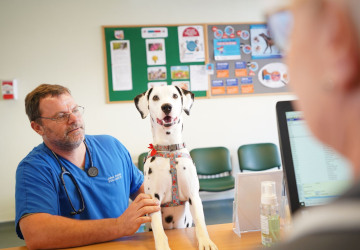
Managing cat and dog obesity
December 7, 2019
Is your pet overweight? One study found about 44% of owners of overweight dogs in Glasgow underestimated Body Condition Score (BCS).
Obesity is a risk factor for a variety of diseases in both species and can adversely affect quality of life. Moreover, in Labrador retrievers, it has been shown feeding a controlled amount of calories from weaning, to maintain a BCS of 4, resulted in a longer life compared to dogs from the same environment that ate the same diet, but were kept slightly overweight. These lean Labrador retrievers also showed lower prevalence of osteoarthritis during their lives.
Body condition scoring is a management tool that can be used to evaluate the nutritional status of animals.
WSAVA body condition scoring for dogs and cats uses a range from 1 to 9.
- Healthy dogs and cats should have a body condition score of 4 or 5.
- Dogs or cats with a body condition score of 1 to 3 indicate a management or health problem.
- Body condition scores of 6-9 indicate an excessive amount of condition that could be detrimental to the dog or cat’s health.
Body condition scores cannot be assigned by simply visually evaluating an animal. The animal must be touched and felt in three specific areas of the body:
1.The first is the lumbar area, which is the area of the back behind the ribs containing the loin.
2.The second is over the ribs and
3.The third is the intercostal (between the rib) spaces.
To visualise and read how to body condition score, please go to https://www.wsava.org/WSAVA/media/PDF_old/Body-condition-score-chart-cats.pdf and https://www.wsava.org/WSAVA/media/PDF_old/Body-condition-score-chart-dogs.pdf
If you’re struggling to condition score your pet, please make an appointment with one of our vets or veterinary nurses to help you.
If your dog or cat is overweight, these are simple corrective actions that you can take:
1.Dietary plan
- The use of over-the-counter maintenance diets for weight loss is not recommended – even “light” type diets.
- Maintenance diets are formulated to meet nutrient needs when calorie needs are met; therefore, feeding restricted amounts of such a diet can result in nutrient deficiencies Moreover, energy density of such diets can range widely and they are not necessarily less energy dense than some maintenance diets without weight management claims.
- Veterinary weight loss diets from reputable brands are nutrient dense and can still meet nutrient requirements, even in the face of calorie restriction. Please make an appointment with one of our veterinary nurses to start a weight loss programme with your pet. They will prescribe a tailored weight loss programme.
- Treats should be limited to 10 per cent of the animal’s daily calorie intake, and the calories from them should be calculated into the Daily Energy Requirement.
2.Exercise
- Exercise will increase calorie expenditure and may help maintain lean body mass and stimulate basal energy metabolism. It also provides an interaction between your pet and you as a substitute for giving treats.
- Daily walks may be used to increase a dog’s exercise, and increased play time can be used for both dogs and cats to increase exercise.
- Some cats also respond to daily walks, but increased play with interactive toys may be more useful and also provides a bonding mechanism without using food.
Aim for weight loss
- 1% to 2% bodyweight per week if using a weight loss diet, less than 0.5% if not
- In some cases, eight to 12 months may be required to achieve an ideal bodyweight in severely obese dogs and cats.
- A slower rate of weight loss, such as one per cent to 1.5 per cent of bodyweight per week, is likely to result in a better chance of the animal maintaining the reduced weight long-term
- Our nurses offer weight loss consultations to enable your pet’s weight loss.
Weight maintenance
- Dietary and exercise habits that have been established during a weight-reduction programme need to be maintained after successful weight loss, and this is sometimes the most difficult part.
- The pet should continue to receive a complete and balanced diet for adult maintenance. Portion-controlled feeding should be continued.
- Some owners prefer to continue to use the same reducing diet that was effective for weight loss, but the amount fed should be increased until the pet can maintain an ideal weight.
- Clients should continue to weigh and monitor their pet at least every 14 days, and veterinary examinations are recommended every two to three weeks until the pet’s weight has been stable for three or four consecutive examinations.
Jürgen Theinert BVSc BSc MRCVS
Edgewood Veterinary Group






